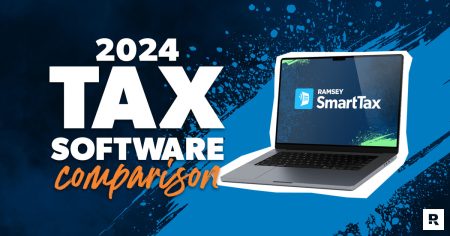When you’re ready to start building wealth for retirement, you’ve got a lot of options.
But not all of them are good options. Risky get-rich-quick investments (cough, crypto, cough) spell disaster for your retirement plans. On the flipside, “safe” investments like gold and bonds won’t even keep up with inflation. That’s why we have been and always will be fans of good growth stock mutual funds.
Investing in mutual funds is a proven way to build wealth and retire a millionaire the right way, minus the stress and uncertainty. But this only works if you know how to choose the right mutual funds for you.
How Do You Choose the Right Mutual Funds?
Mutual funds are like people—the only way to separate the good ones from the not-so-great ones is to get to know them. So, to choose the right mutual funds, you’ll need to take a look at the fund’s printed prospectus or online profile.
We know you’re excited to get started. But before we talk about what to look for in the fund’s profile, it’s important to know exactly what mutual funds are and how they work. After all, you should never invest in anything you don’t fully understand.
What Are Mutual Funds?
Let’s start by reviewing the basics. What are mutual funds? Let’s say you have a “pizza fund jar” in your kitchen, and each time a member of your family passes by the jar, they toss in a few bucks. You and your family have just mutually funded your next pizza night (yum!). Easy as that!
Just like pizza night, with mutual funds you join a pool of other investors. These pooled contributions are invested and managed by professional fund managers for you.
And instead of purchasing stock in a single company, mutual funds contain stock (or bonds) in dozens (even hundreds) of companies. Basically, you’re buying bits and pieces of many companies wrapped up into one fund.
Benefits of Mutual Funds
It’s a fact of life that some stocks go up in value and some stocks go down. Owning stock in a single company is like putting all your eggs in one basket. It’s way too risky and creates an emotional roller coaster you do not want to go on.
Since each mutual fund contains stocks from multiple companies, stock values may rise or fall for individual companies, but the overall value of the fund should still go up over time. And as the value goes up, so do your returns! Not too shabby! But that’s not the only advantage of mutual funds—others include:
- Active and professional fund management (more on this in a minute)
- Dividend reinvestment (your money makes money!)
- Lower costs
- Instant diversification
In the United States alone, $27 trillion total net assets are held in just over 9,000 mutual funds. $27 trillion!1 Each of these funds contains its own investment strategy, risks and rewards.
So now, here comes the challenging part, choosing your mutual funds! Luckily, we happen to know a thing or two about that.
What to Look for When You Choose Mutual Funds
All right—let’s get to the nitty-gritty of how to choose the right mutual funds. Like we said earlier, the mutual fund’s prospectus or online profile will tell you a lot of what you need to know.
Here are six important features you’ll need to review as you select funds to invest in:
1. Objective
This is a summary of the fund’s goal and how its management team plans to achieve that goal. We recommend spreading your investments evenly between these four types of mutual funds:
- Growth and income funds: These funds create a stable foundation for your portfolio. Usually, you won’t see a lot of extreme losses or gains with these funds, but they are more predictable when the market shifts. They’re basically big (boring) American companies that have been around for a long time—often household names. They offer goods and services that people use regardless of the economy. Look for funds with a history of consistent growth and dividend payments. These are also called large value, large-cap, blue chip, dividend income or equity income funds.
- Growth funds: Here, you’ll find medium to large American companies that are currently experiencing growth in their market. These companies are more likely to ebb and flow with the economy, and they often make the latest “it” product—a fancy new gadget or luxury item. Other common names include mid-cap or equity funds.
- Aggressive growth funds: Think of these funds as the wild child of your portfolio. When they’re up, they are up. And when down, they are down. While aggressive funds usually invest in small (or start-up) companies, size isn’t the only factor. Geography can also play a role, and if a large company enters an emerging market, their stock might also end up in an aggressive growth fund.
- International funds: International funds are great additions to your portfolio because they help spread risk beyond U.S. soil. They also allow you to invest in big non-U.S. companies. You might see these referred to as foreign or overseas funds. Be careful not to confuse international funds with world or global funds, which contain both U.S. and foreign stocks together.
By balancing your investing dollars between these four types of funds, you create the stable and diverse portfolio you need for long-term wealth building.
Market chaos, inflation, your future—work with a pro to navigate this stuff.
Putting 25% of your investment money into each of these four types of funds makes sure that you’ve got your eggs spread out in a few different baskets. That’s the kind of strategy you need for long-term wealth building.
Ramsey Solutions is a paid, non-client promoter of participating pros.
2. Fund Manager Experience
We’ve mentioned fund managers a couple of times already. But what exactly does your fund manager do?
Unlike most other investments, mutual funds come with a team of investment professionals. Basically, fund managers invest your contributions on your behalf. They also:
- Set the fund’s strategy
- Perform in-depth market research
- Monitor the fund’s performance
- Adjust investments as needed
Other investments, like index funds, have a set-it-and-forget-it approach with no built-in professional management. You cross your fingers and hope everything works out (more like set it and stress about it!)
Mutual funds are more of a set-it-and-trust-it approach, especially in the hands of a good fund manager. You wouldn’t trust just anyone behind the wheel of your car, would you? The same goes for your retirement investments. That’s why you want an experienced manager calling the shots for your mutual fund—someone with at least 5–10 years under their belt. Keep in mind, though, that many managers mentor their successors for several years. So don’t completely write off a fund with a new manager—it might still be a good option if the fund has consistently performed well.
3. Sectors
Sectors refer to the types of businesses the fund invests in, businesses like financial services or health care. A fund that’s invested in companies across a wide range of sectors means the fund is well diversified. That’s what you’re looking for, because you don’t want your retirement future to depend on companies from one particular industry (in case that industry just so happens to collapse). Like we said earlier, don’t put all your eggs in one basket.
4. Performance (Rate of Return)
Would you bet on a horse that’s never won a race? Of course, you wouldn’t! When investing in mutual funds, you want to choose funds with a history of strong returns (or ROI). Focus on long-term returns—10 years or longer if possible.
Remember, once you’re on Baby Step 4, invest 15% of your pretax household income. That means if you have a $65,000 a year income, you’ll invest about $800 a month. Here’s what you can expect investing in mutual funds from ages 35–65:
- $800 per month from ages 35–65 at 10% return is $1.8 million.
- $800 per month from ages 35–65 at 11% return is $2.2 million.
- $800 per month from ages 35–65 at 12% return is $2.8 million.
Keep in mind that these numbers assume a $65,000 annual household income from ages 35–65. This means that even if you never get a raise, switch to a higher-paying job, or receive an employer match throughout your career, you can still retire as a millionaire. A freaking millionaire!
5. Cost
Even after finding a mutual fund that gets great returns, costly fees can really muck up your growth. This is why you should invest in front-end load mutual funds. What does that mean? It just means you pay fees and commissions up front when you make your investment. Simple, right? This allows your money to grow without being bogged down by expensive management fees. Also pay attention to the fund’s expense ratio, which is a collection of fees that help cover the costs of managing the mutual fund. A ratio higher than 1% is considered expensive.
Be careful not to fall into the trap of no-load mutual funds. These are mutual funds purchased directly from a company instead of a fund manager or broker. They don’t charge a commission, which can seem attractive at first. But they can pump up maintenance fees and other hidden fees. If you’re not careful, you might end up paying more over time! That’s why it’s best to stick with front-end load funds. This way, you know the costs up front.
Plus, those commissions pay your investing pro for their time and expertise. They help you make an investing plan and research and recommend good mutual funds for you to invest in. That professional advice is worth a few bucks, right?
6. Turnover Ratio
Turnover refers to how often investments are bought and sold within the fund. A low turnover ratio of 10% or less shows that the management team has confidence in its investments. A high turnover ratio is a red flag that the management team isn’t very confident in their investment choices. Or they might be trying to time the market for bigger returns—not our goal.
If you’re investing in a brokerage account instead of a tax-advantaged account like a 401(k) or a Roth IRA, you’ll want to pay extra attention to a high turnover ratio because it can mean higher tax costs. So, if you see lots of turnover, it’s not the right fund for you. We’re trying to put money into your pocket, not Uncle Sam’s.
Remember to Be Patient—Don’t Obsess
The key to a successful portfolio of good growth stock mutual funds is patience. There’s no reason to panic if the market is down, especially if you’re in your 20s, 30s or 40s (heck, even your 50s and 60s). Like Dave says, the market has recovered from the dips 100% of the time. Put your phone down, turn the television off, and take a deep breath. Don’t give into fear. Trust the proven process.
Remember, you’re investing for your retirement. This isn’t a slot machine. You’re not looking for short-term gains. You’re here for the long haul. You’re here to win. If you continue the Baby Steps and choose the right mutual funds, you will win the long game.
Need Help Picking Mutual Funds? Get a Financial Advisor.
If this sounds like a lot of information to dig through and compare, that’s because it is. The good news is you don’t have to do it all alone.
Our SmartVestor program can set you up with a vetted investment pro in your area who knows the ins and outs of the market. They’ll guide you through the investing process and help you make a plan that’s right for you. With a SmartVestor Pro, you can rest easy knowing you’ve got an experienced voice in your corner as you work toward your retirement goals.
This article provides general guidelines about investing topics. Your situation may be unique. To discuss a plan for your situation, connect with a SmartVestor Pro. Ramsey Solutions is a paid, non-client promoter of participating Pros.
Read the full article here
















